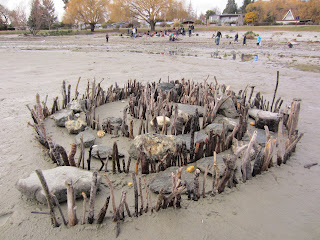
Trace Fossils
Some of the most interesting fossils don't even belong to the animal. They are the marks the animal has left behind, they can be footprints, impressions of the skin or droppings. These are called trace fossils and can be very useful to scientists as they can tell how the animal lived. Nests and eggs also give information of an animal's lifestyle. It is usually easier to identify a particular animal from a nest or fossilized egg rather than from a trace fossil.
Mold Fossils
This is an imprint of an animal or its trace. A shell can make an imprint in the sand. After the sand hardens the shell can dissolve and leave a spave in the shape of the shell. This space is called a mold fossil. When the sediment hardens into rock a fossil is formed in the same shape as that shell.
| |









